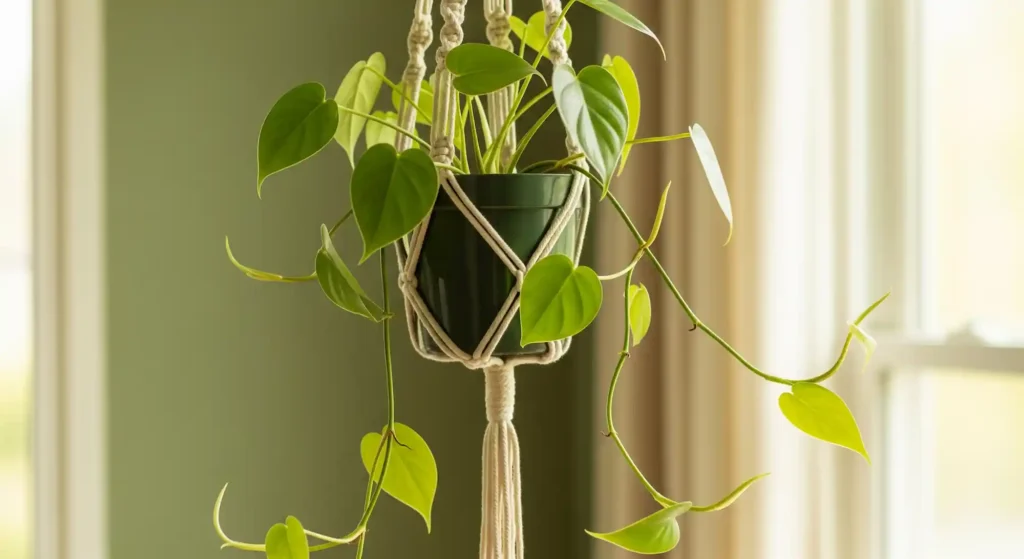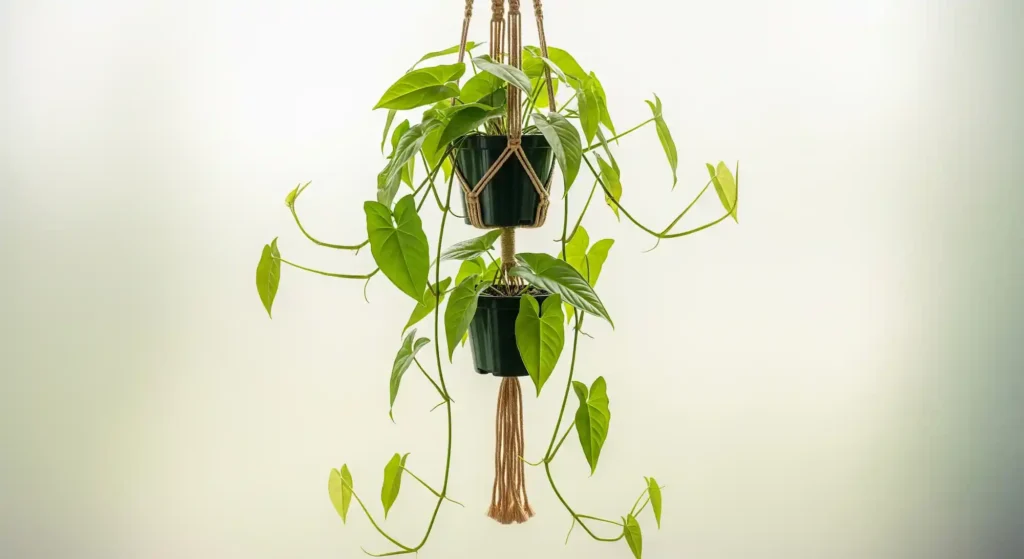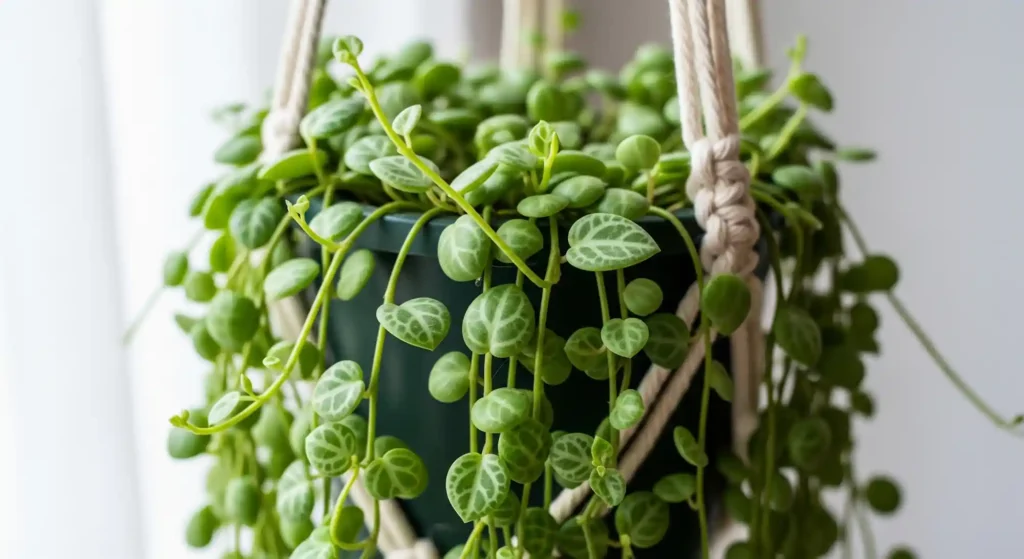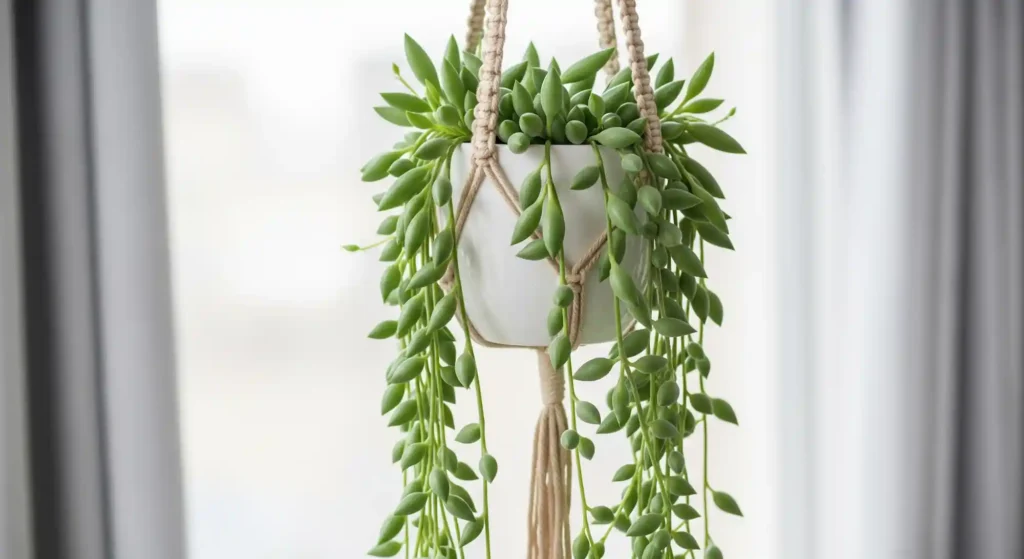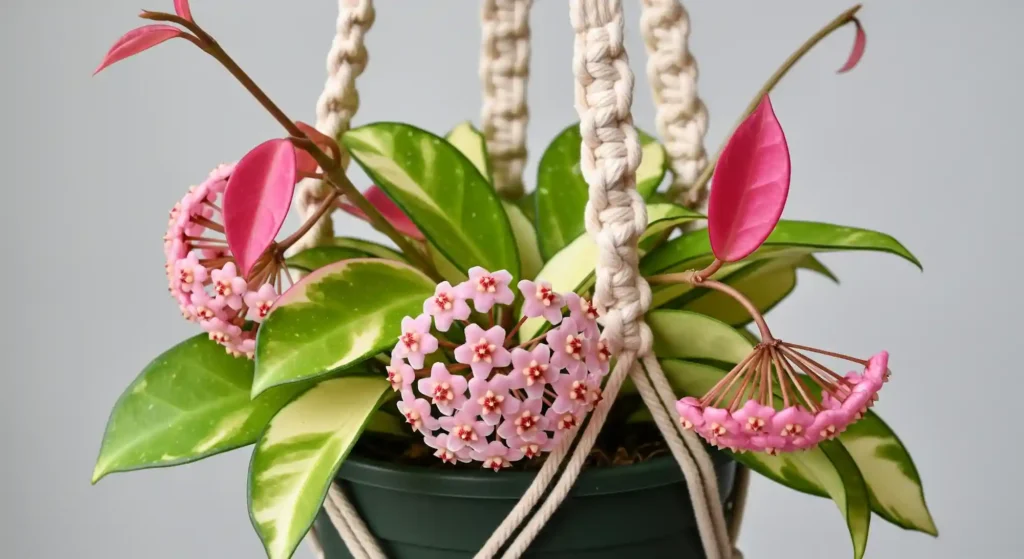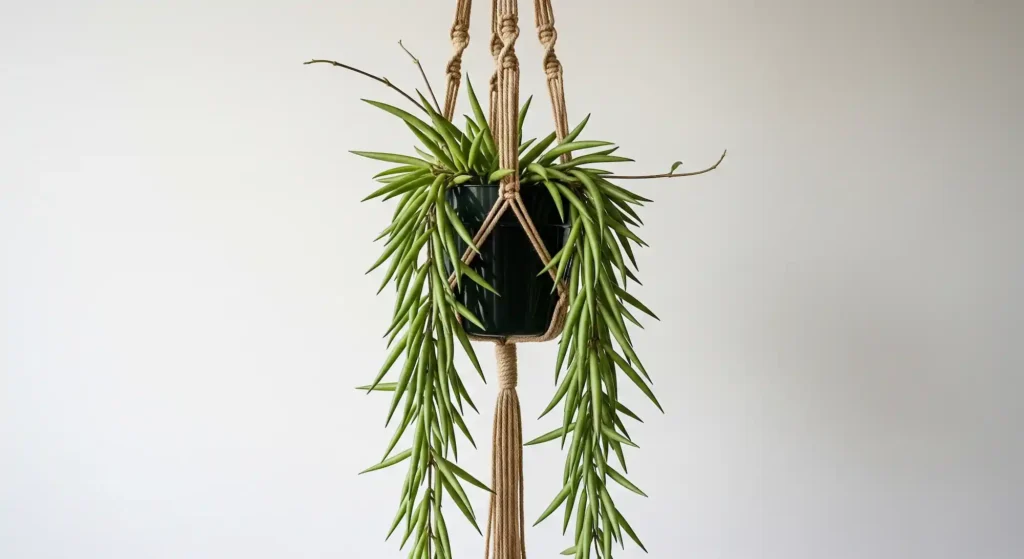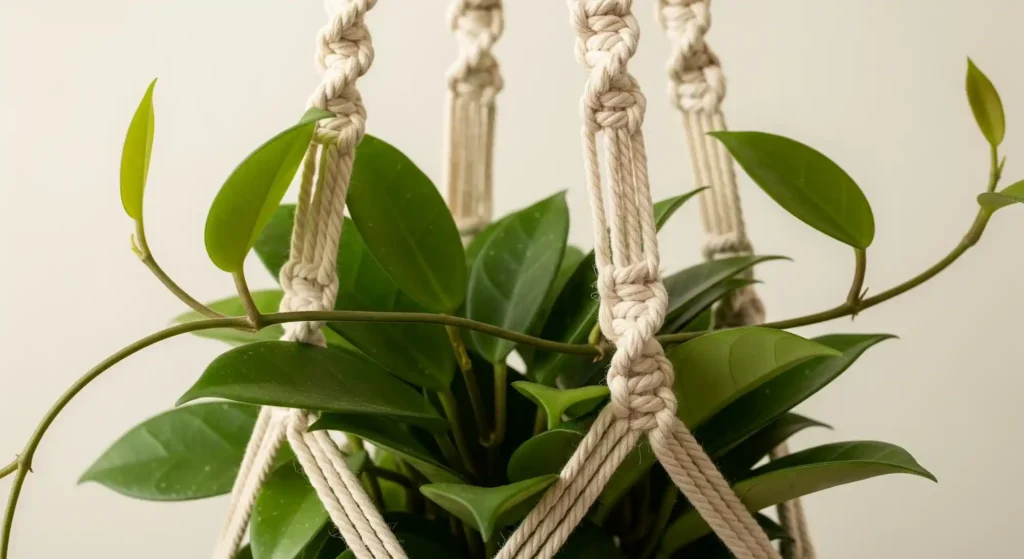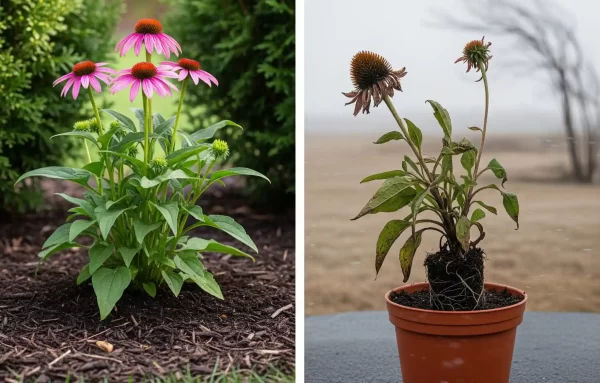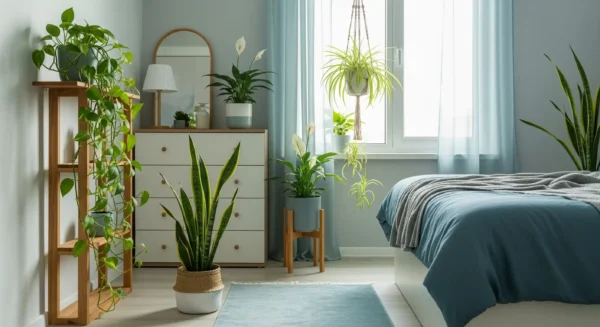That Beautiful Macrame Hanger Calls for the Perfect Plant. Here’s How You Choose.
You came onto the ideal handcrafted macrame hanger. Perhaps it was a straightforward, elegant item you had your eye on for weeks, or maybe a distinctive find at a nearby market with complex, boho knots and trendy wooden beads. You carried it home, located the perfect place in a sun-drenched corner of your living room, and mounted the ceiling hook. And now it sits there, lovely but empty, a work of art just waiting for its live equivalent. It has so much promise, a subtle promise of vertical vegetation, but the key question still is: what plant is really deserving of this lovely seat? How then do you finish the picture?
Choosing the ideal plants for macrame hangers mostly depends on selecting ones that know their purpose. This is a design cooperation between handcrafted textiles and live flora. You want kinds that love to drape, trail, and cascade to create that amazing “waterfall of green” that transforms an ordinary pot and hanger into a dynamic, focal point. The correct plant will embrace the hanger, thread its tendrils across the knots and tassels, spill over the sides, and finally merge with the hanger until the two become one indivisible piece of living art. It won’t just sit passively in the hanger.
Not all trailing plants, meantime, are made equally. others simply have that ideal look to complement your own taste, others require more light than others, and some are far more forgiving of a missed watering. One can find it to be overpowering. From the unkillable classics that will provide beginners rapid success, to some really unusual and surprise showstoppers that would wow seasoned collectors, this book will simplify the process and investigate the absolute best contenders. We will assist you in selecting the ideal green partner for your woven work of art so that your pick will remain vibrant for years to come rather than only lovely on day one.
Key Characteristics of a Perfect Hanging Plant
Let’s briefly define what makes a plant really “macrame-ready.” Knowing these fundamental traits will enable you to make a fantastic decision not only from this list but also any time you visit a nursery. Before we explore the fascinating list of plants. See these as the four pillars of a flawless hanging plant.
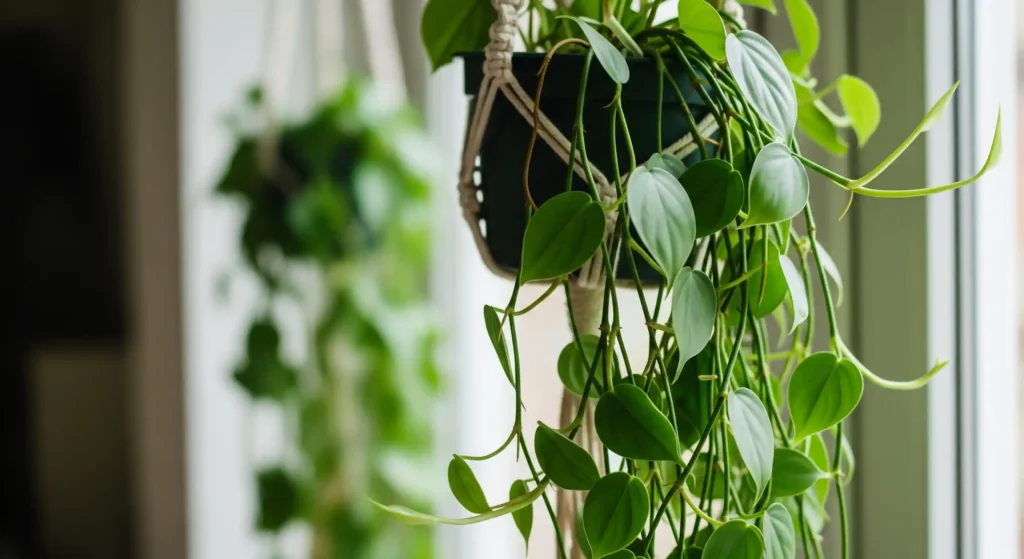
- A Trailing or Vining Habit: Most importantly visual element is a trailing or vining habit. You want a plant that, under the force of gravity, naturally tends to grow downhill. This elegant cascade accentuates the hanger’s vertical lines and produces that rich, overflowing appearance we all want. Although some arching plants, such as Spider Plants, look great and produce a fountain-like effect, the real enchantment usually resides in the trailing tendrils that may reach amazing distances.
- A Degree of Drought Tolerance: This very pragmatic factor will simplify your life considerably. Usually hung in warmer air rising toward the ceiling, hanging plants are surrounded by 360 degrees of airflow. Their soil so dries out far faster than the soil of a plant kept on a tabletop. Selecting a plant that can withstand entire soil drying out between waterings offers a much-needed respite for time-pressed plant owners and helps avoid the fear of a missed watering day.
- Appropriate Light Needs: Usually found in or close to a window, macrame hangers are utilized to activate the bright, unneeded vertical space in our houses. Thus, great options for these sought-after locations are plants that flourish in bright, indirect light. While a sun-worshiking succulent might not get enough light indoors, a plant that demands low light could suffer from the intensity near a window. The golden rule of plant maintenance is matching the plant to the light you have.
- Manageable Weight & Growth: This is maintenance and safety related. The perfect plant won’t be overly heavy, which could strain your hanger and ceiling hook—a big terracotta pot loaded with moist soil and a big plant can be shockingly weighty. It should also have a reasonable growth rate so you’re not always having to repot it. A excellent, sustainable plant is one that is easy to prune and propagate or one that is content to remain just minimally root-bound.
The Complete Guide for Selecting the Perfect Trailing Plants
Let us now get to the interesting section. To assist you identify your ideal match, we have compiled a list of thirty amazing plants arranged by style and personality. We will explain why we adore it and a pro tip to help it flourish for each one.
The Unkillables (Ideal for Beginners)
Start here if you have never grown plants or simply want a guaranteed success story with quick results. Famously forgiving, strong, and lush, these plants have a great visual effect with little work required.
Golden Pothos (Epipremnum aureum)
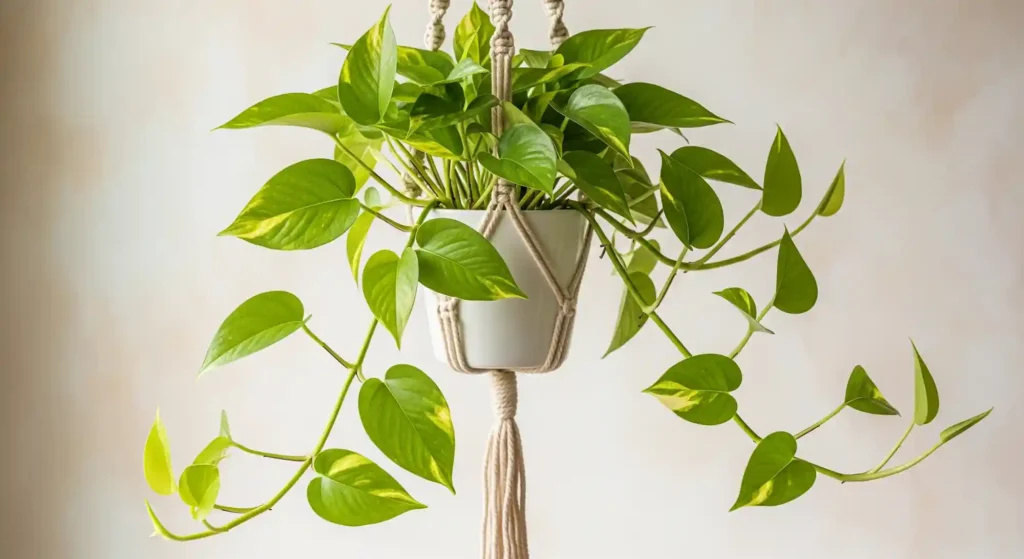
- Why you’ll love it: It grows fast, tolerates a broad spectrum of light, and is rather robust, allowing you that long, trailing appearance faster than others.
- Pro Tip: Brighter light will accentuate the golden variegation. Under less light, the leaves could turn increasingly solid green.
Heartleaf Philodendron (Philodendron hederaceum)
- Why you’ll love it: Though it looks softer, more refined, it’s just as forgiving as a Pothos. Its thin, elegant vines drape wonderfully.
- Pro Tip: You can quite easily propagate this plant. In a few weeks you will have a fresh plant to offer if you only cut off a vine, put it in water.
Spider Plant (Chlorophytum comosum)

- Why you’ll love it: It generates many “pups,” or baby plantlets, that neatly fill a hanger and provide lots of babies to spread down long stems.
- Pro Tip: Usually, minerals in tap water are the reason the leaf tips turn brown. Experiment with irrigation using distilled or filtered water.
Wandering Dude (Tradescantia zebrina)
- Why you’ll love it: It provides a great color impact with little effort and grows shockingly quickly. For hurried gardeners seeking a complete, rich appearance right away, it’s ideal.
- Pro Tip: Since it can get “leggy” during time, pinch back the stems often to promote busher development.
Arrowhead Vine (Syngonium podophyllum)
- Why you’ll love it: It will send out long vines that elegantly trail over the side of the pot as it ages, producing a lovely two-tiered impression. It’s also well-known for not tolerating as low light levels as several other vining plants.
- Pro Tip: To guarantee all sides get light and hence promote a complete, even shape, turn the pot every so often.
The “String of Things” Collection (Delicate & Sculptural)
Those that see their plants as living sculptures fall into this category. True conversation starters that look great on simple hangers, these fragile, succulent-like plants are identified by their unusual, bead-like foliage.
String of Pearls (Senecio rowleyanus)
- Why you’ll love it: It is a real living work of art demanding attention.
- Pro Tip: After setting the pot in a dish of water for ten to fifteen minutes, water from the bottom. Watering from the top will readily destroy the delicate stems near the soil level.
String of Hearts (Ceropegia woodii)

- Why you’ll love it: Though it looks, it’s really hardy and drought-tolerant; it’s also rather delicate and attractive.
- Pro Tip: The plant starts out in the ground from little tubers. If it loses some vines, don’t panic; long as the tubers are healthy, it can regenerate.
String of Turtles (Peperomia prostrata)
- Why you’ll love it: Its unusual, finely drawn foliage is collector’s favorite. On a vine, this is a tiny universe.
- Pro Tip: It likes somewhat more humidity than other “string” plants. Perfect is a space in a bright bathroom.
String of Bananas (Senecio radicans)
- Why you’ll love it: It provides a “string” look but with faster development and more forgiving care.
- Pro Tip: Should the vines get too long, just clip them and place the cuttings back into the top of the pot to produce a bigger plant.
String of Dolphins (Senecio peregrinus)
- Why you’ll love it: This sought-after and lighthearted decision never fails to bring people smiles.
- Pro Tip: To preserve the unique dolphin form, give it lots of brilliant, indirect light. New leaves may become less curled under decreasing light.
The Hoya Haven (Waxy & Wonderful)
Their thick, waxy leaves and exquisite, often scented, star-shaped flower clusters make hoyas beloved. Though slow growers, their beauty and lifetime value make them a worthy, lifetime investment.
Hoya Carnosa ‘Tricolor’ (Krimson Queen)
- Why you’ll love it: Mature plants have gorgeous, fragrant flower clusters; new leaves often show a vivid pink.
- Pro Tip: Hoyas bloom most when they are only slightly pot-bound. Don’t rush your repotting of them.
Hoya Linearis
- Why you’ll love it: It’s a real showstopper with a gentle, curtain-like look when mature.
- Pro Tip: Compared to many of its waxy-leafed brethren, this hoya likes rather cooler and more humid surroundings.
Hoya Curtisii
- Why you’ll love it: It produces over time a thick, draped mat of foliage ideal for a full-looking hanging.
- Pro Tip: Its stems will interact beautifully with the hanger by clinging to the macrame ropes.
Hoya Kentiana
- Why you’ll love it: Its distinctive, almost grassy appearance and gorgeous, reddish-pink, caramel-scented flower clusters will captivate you.
- Pro Tip: Give it lots of strong light to promote both the red leaf margins and abundant flowering.
Hindu Rope Plant (Hoya carnosa ‘Compacta’)
- Why you’ll love it: This slow-growing collector’s plant resembles a living sculpture.
- Pro Tip: Check it closely and often since its nooks and crevices could be hiding place for mealybugs.
Lush & Leafy Jungle (For a Fuller Look)
These plants, with their bigger leaves and dense growth, are your best friends if your dream is to design an indoor jungle.
Satin Pothos (Scindapsus pictus ‘Argyraeus’)
- Why you’ll love it: The dark green, velvety leaves seem to shine in the light from their sparkling silver specks.
- Pro Tip: When the plant gets thirsty, the leaves will curl inward to give a clear, simple, easy-to-read indication that it’s time to water.
Philodendron Micans
- Why you’ll love it: The leaves change in hue from reddish-bronze on fresh growth to a rich, dazzling green as they age.
- Pro Tip: To accentuate the richest coloring, give it brilliant, indirect light. The delicate, velvety leaves might burn from direct sun.
Brasil Philodendron (Philodendron hederaceum ‘Brasil’)
- Why you’ll love it: Like a party in a pot—exuberantly joyful and just as easy to maintain as its all-green relative.
- Pro Tip: Watching a plant grow is exciting and fun since no two leaves are precisely like one another.
Swiss Cheese Vine (Monstera adansonii)
- Why you’ll love it: It’s a quick grower once it’s happy and gives any area instant jungle vibes.
- Pro Tip: It welcomes more humidity. It will be quite happy if you group it with other plants or put it in a light bathroom.
English Ivy (Hedera helix)
- Why you’ll love it: There are several variants ranging from classic green to variegated forms with white or yellow margins.
- Pro Tip: Since it can be invasive in many outdoor surroundings, keep it indoors. Also prone to spider mites, hence inspect the leaves often.
Architectural & Modern (Unique Shapes & Textures)
For individuals with a modern style, these plants provide unusual forms, crisp lines, and intriguing textures beyond basic leaves.
Fishbone Cactus (Disocactus anguliger)
- Why you’ll love it: For its strong, graphic, modern design. The stems develop long, trail-down in an interesting, striking manner.
- Pro Tip: This epiphytic cactus from the jungle, not the desert, demands more humidity and less direct sun than its desert cousins.
Burro’s Tail (Sedum morganianum)
- Why you’ll love it: It has a fantastic tactile texture and is really stunning.
- Pro Tip: This is quite delicate. Look for a place for it where the leaves fall off somewhat readily and won’t be bumped. Still, every dropped leaf can be used to start a fresh plant!
Mistletoe Cactus (Rhipsalis baccifera)
- Why you’ll love it: It’s airy, modern, and soft—a feel that belies what you would find from a cactus.
- Pro Tip: Being a jungle cactus, it prefers more regular watering than a desert cactus and brilliant, indirect light.
Asparagus Fern (Asparagus densiflorus ‘Sprengeri’)
- Why you’ll love it: It simply looks softly, light, like clouds and contrasts well with the heavy strands of a macrame hanger.
- Pro Tip: As it drops its little leaves, it can get really dirty. It’s great for a place where a little cleanup won’t be a big problem.
Rex Begonia Vine (Cissus discolor)
- Why you’ll love it: On brilliant red, vining stems, it boasts exquisite silver-and-purple striped leaves. The color combo is amazing.
- Pro Tip: This plant needs more humidity if it is to flourish and avoid crunchy gorgeous leaves. It’s a great contender for a big terrarium or a greenhouse cabinet.
Color, Variegation & Blooms
Though green is beautiful, occasionally you desire a contrast of color. These plants produce either gorgeous, long-lasting flowers or shockingly variegated leaves.
Lipstick Plant (Aeschynanthus radicans)
- Why you’ll love it: It looks just like a tube of lipstick before it’s applied—vibrant red, tubular blossoms emerging from a dark, maroon tube.
- Pro Tip: It blossoms best in the winter with lots of brilliant, indirect light and somewhat lower temps.
Goldfish Plant (Columnea gloriosa)
- Why you’ll love it: It adds a whimsical touch of color with its fluffy, orange or red blossoms that seem uncannally like leaping goldfish.
- Pro Tip: Though not soggy, it prefers to be kept uniformly moist. Between waterings, never let it totally dry out.
Thanksgiving/Christmas Cactus (Schlumbergera)
- Why you’ll love it: During the holidays, its segmented, draped stems explode with jewel-toned pink, red, white, or magenta, offering a pleasant seasonal rainbow.
- Pro Tip: Give it colder nighttime temps and more fall darkness to inspire blossoming.
Manjula Pothos (Epipremnum aureum ‘Manjula’)
- Why you’ll love it: Its broad, heart-shaped leaves have wavy edges and vast, painterly patterns of cream, silver, and several tones of green.
- Pro Tip: Its great degree of variegation (less chlorophyll) causes it to grow slower than a Golden Pothos and need always strong, indirect light to flourish.
Marble Queen Pothos (Epipremnum aureum)
- Why you’ll love it: The very brilliant, high-contrast look it produces will help to lighten any area of your house.
- Pro Tip: The quantity of light it gets directly determines the white variegation level. Whiter leaves would follow from more light.
Final Notes: Styling Your Hanging Display
The most important decision is on the plant; but, a few basic style ideas will transform your hanging display from good to “wow,” therefore transforming it into a real design element.
- The Pot as a Frame: The framework of the plant is the pot. Think about keeping your plant in its plastic nursery pot (which includes drainage holes) and sliding it into a somewhat larger, lightweight ornamental pot devoid of a drainage hole to keep things simple and prevent messes from dripping water. Acting as a cachepot, it gathers any extra water. Good materials are recycled plastic or lightweight fiberglass.
- Create a Grouping: Create a group instead of hanging one alone! Often, the most powerful presentations combine elements. To create a luxuriant “plant chandelier” look that draws the eye upward and makes a strong statement in a corner, hang two or three macrame hangers at various heights. Mixing textures is another great visual appeal; a fluffy Asparagus Fern next to a waxy Hoya looks great.
- Match Plant to Hanger: Think about the harmony between the hanger itself and the plant. Where the hanger itself is a primary focal point, let a basic, elegant, and delicate plant like a String of Hearts shine in a complicated, highly knotted or beaded macrame hanger. Let a full, lush, and dramatic plant like a Pothos or a Spider Plant take front stage for a very basic, understated hanging with straight lines.
Frequently Asked Questions
There are some unusual logistical concerns behind hanging plants. These are the most often asked questions with solutions to guarantee your success.
How can I water my hanging plant without making a mess?
Although this is the toughest obstacle, its solution is straightforward and quite successful. Take the plant down for a “spa day,” carrying the whole thing—still on its hanger if you prefer—to a basin or bathtub. Water it completely until water runs freely from the drainage holes at the nursery pot’s bottom. This guarantees all around saturation of the root ball. Let it then sit and drip for 15 to 20 minutes before hanging it back up. This deep-watering technique insures that drops won’t show up on your floor and is far better for the plant than little, regular sips.
How do I know if it’s getting enough light way up there?
As you get further from a window, light intensity falls drastically. Up toward the ceiling, a location that seems brilliant at eye level could be really dimmer. Generally speaking, your hanging plant should have a clear, unhindered view of the heavens from its position. It is gathering light if it can “see” the heavens. Another fantastic method is to utilize a phone light meter app. Holding it where the leaves of the plant are, observe the kind of reading you get. Almost typically, the plants on this list depend on being near windows to really flourish. Remember to turn your plant every time you water it to guarantee consistent growth and light on all sides.
My plant is growing from the top but not trailing down the sides. What should I do?
Some vining plants need some encouragement to get going! Should you have a young Pothos or Philodendron just producing a few long vines, they may first grow upward or outward in search of the light. Take a handful of the longest vines gently and drape them over the side of the pot to inspire the cascade. Gravity will take over once they are hanging and inspire them to keep downing. Pruning the longest vines will also help the plant to branch out and develop fuller at the top.
Hanging Living Art
Choosing the ideal plants for macrame hangers is a kind of home design rather than only plant care. It’s about discovering that ideal synergy between a handcrafted piece and a living, breathing plant, a relationship that gives the neglected vertical areas of your house texture, color, and vitality. This is a chance to create levels of interest, point the attention upward, and provide a lush, natural beauty that no other item of décor can ever really copy. One dynamic piece of art that grows and changes with you and your house is a hanging plant.
So go ahead and select a vine that appeals to you—a distinctive and sculptural showstopper or a laid-back classic. Create a flowing work of live art out of that vacant hanger. Your house will seem more alive for it.


